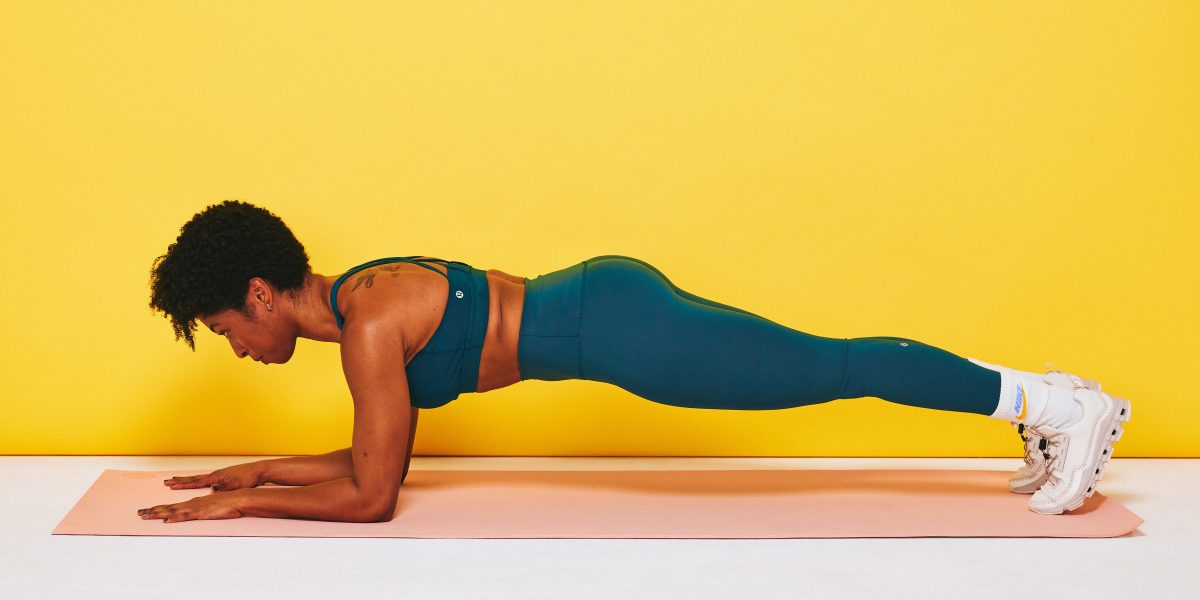“These muscles should kick in to support our body whenever you go to move,” Dr. Ennis says—whether you’re walking, running, or lifting weights. Deep core strength helps you maintain proper form, prevent injuries and strains, and breathe better, DiSalvo says. In other words: to have a safer and more effective workout.
Deep core bracing is especially helpful during resistance training, DiSalvo says. When your deep core is adequately supporting your spine, you can protect against back strain and focus on working the muscles you actually want to train, Dr. Ennis explains. “If you’ve ever seen someone wearing a weightlifting belt, it’s mimicking that support.”
Let’s take deadlifting. If you fire up your deep core while you pull the barbell from the ground, this prevents you from over-arching your spine and keeps the weight in your lower body instead of your lower back, DiSalvo explains. Or if you’re doing bicep curls and your deep core isn’t strong enough to stabilize you, not only can you stress your back—but you’re also not targeting your arms properly. “Without that support of the deep core, your lifting isn’t going to be as effective,” Dr. Ennis says.
A strong deep core ensures that other muscles don’t get recruited to support the spine. “You’re much more likely to get a strain when muscles are doing jobs they’re not necessarily designed to do all the time,” Dr. Ennis explains. For example, if you’re doing lunges without deep core engagement, your hip flexors (which are already working to lift and lower your legs) may pitch in to help stabilize your spine, too, Dr. Ennis says—and get majorly overworked.
Perhaps the most surprising member of the deep core team—your diaphragm—plays an important role in cardio workouts by helping you breathe properly, DiSalvo says. When you breathe from your chest, you take shallow and inefficient breaths. You can also potentially force your body to use accessory breathing muscles in the torso, which can lead to neck and shoulder pain, Dr. Ennis says. But when you breathe from your diaphragm (and your diaphragm and the mind-muscle connection are strong enough), you take deeper breaths and use your lungs to their full capacity. This is known as “diaphragmatic breathing,” and there are a bunch of benefits to it: It brings more oxygen to your blood, reduces your heart rate and blood pressure, and improves the way your muscles work..
While it’s hard to study the impact of training just the deep core, lots of studies have found that overall core strengthening and stabilization programs help reduce back pain in athletes and improve athletic performance, physical therapist and certified strength and conditioning specialist Anat Lubetkzy, PhD, an associate professor of physical therapy at New York University, tells SELF.
Deep core strength has perks outside the gym, too. For instance, studies have found that belly breathing can help reduce stress. And a “fair amount of research” shows that core stabilization exercises can help treat chronic lower back pain in non-athletes, Dr. Ennis says. What’s more, studies have also found that core stability and pelvic floor muscle exercises help with urinary incontinence (leaking pee), Dr. Lubetzky says.
Okay, but do you need special exercises to work your deep core?
Most people will probably benefit from adding moves that target deep core muscles to their routine, Dr. Ennis says. You can do this with exercises that use a variety of movement patterns to stabilize your spine in different ways, Dr. Lubetzky says. That includes flexion (curving your spine forward), extension (arching the spine backward), rotation (turning) and isometric (holding still).
